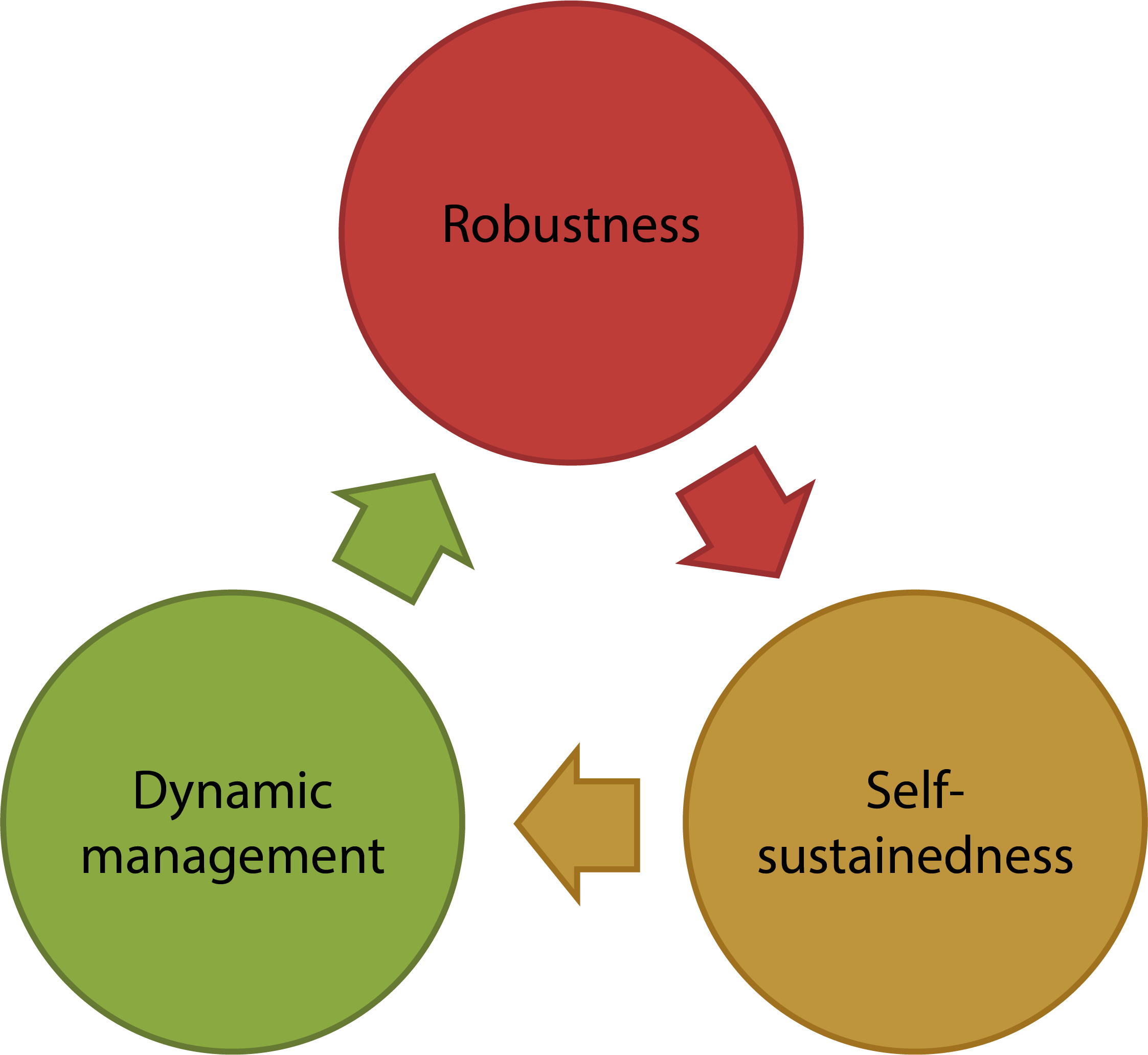
Disaster Management Manual
A manual for practitioners and decision makers!

Disaster Management Manual
A manual for practitioners and decision makers!
From the international study, it can be inferred that the world has experienced several large and combined disasters compared to previous decades. Preparing for such disasters is one of the actual urgent needs in terms of disaster management.
Based on the study’s findings, the properties of large-scale and combined disasters can be defined using the following characteristics:
For managing those disasters in the road network, preparedness should be up to date and new concepts are needed. These concepts should take into account the important key words identified in major Safety Burst situations: robustness, self-sustainment and dynamic risk management (see Figure 5.2.2).

Based on the findings of the international survey, no differences could be found in preparedness for large and combined hazards from that assumed for common-scale disasters. However, a new concept for disaster management considering the Safety Burst condition is emerging after the 2011 combined and serious nuclear plant disaster that occurred in Japan. The road system and network should be well prepared against safety burst situations in which damages are propagating in space and expanding in time often resulting that the expected performance of the system becomes out of control. The recommendations considering such conditions are proposed as follows: